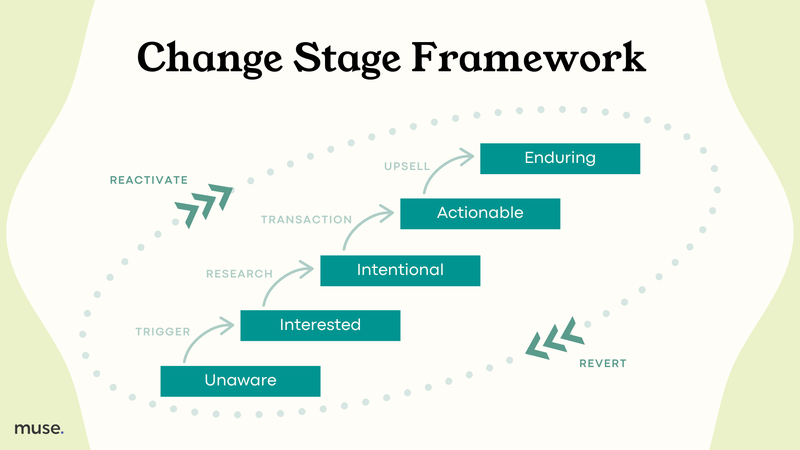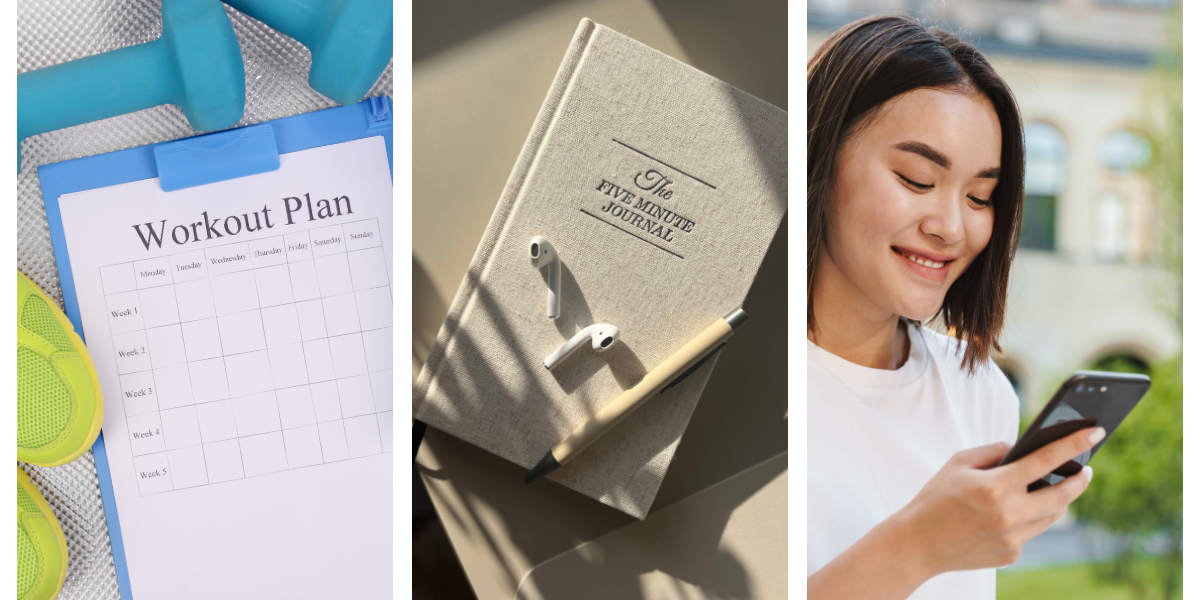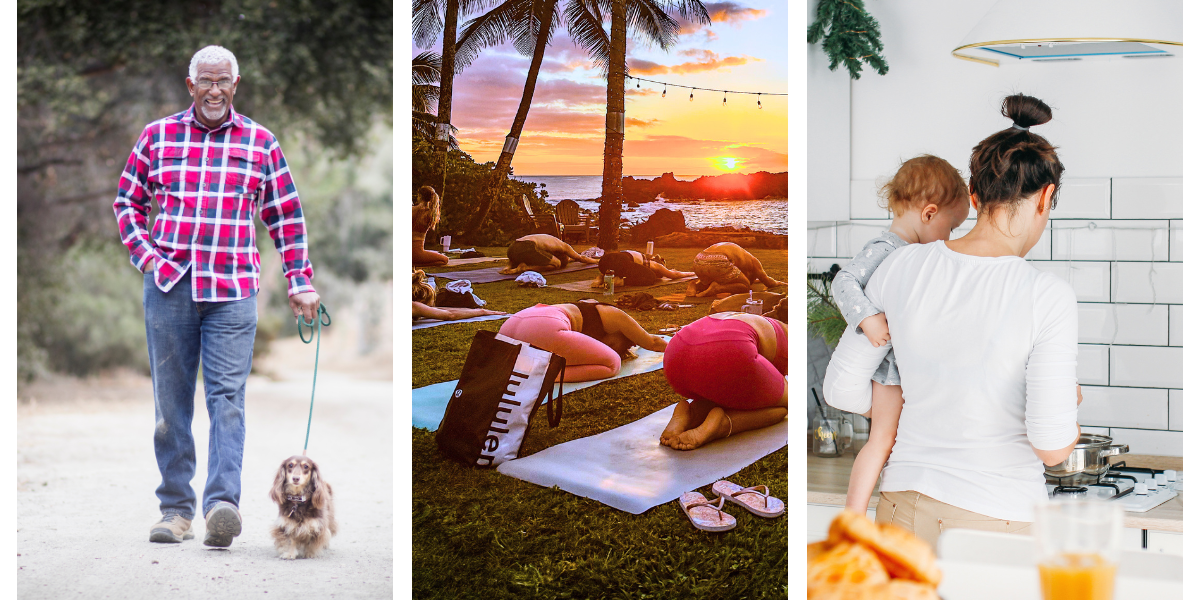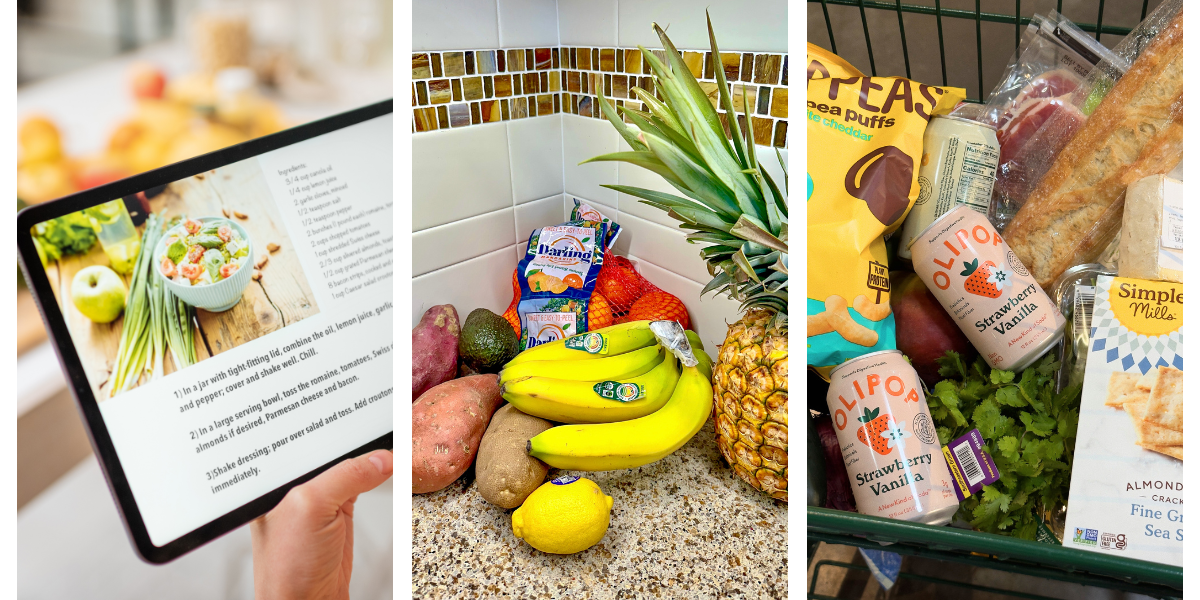Modern Wellness Customer Personas: 2025
How to target different wellness motivations of consumers, updated for 2025.
Brands in the wellness industry have a unique challenge. In many cases, a customer behavior change is required to achieve the brand's promised results. This is not as simple as selling a quick fix like a new light bulb.
Buyers who invest in wellness not only spend money on the product or service; they also consider the time and effort it takes to create positive change in their lives. These additional factors can create barriers to conversion across the buying journey.
For this reason, traditional buyer journey models aren’t always effective for wellness brands. Instead, we build marketing strategies around the Transtheoretical Model of Change.
Wellness Customer Personas Within the Buyer Journey
As detailed in previous articles, the substance behind this proven psychological methodology is five, non-linear stages to behavior change:
- Not Ready
- Getting Ready
- Ready
- Action
- Maintenance
After years of experience in this industry and research conducted, we refined the Transtheoretical Model of Change even further into our Change Stage Framework™.

Our goal as marketers is often to attract new buyers, so we focus message and media choices on reaching audiences in the Unaware/Interested stages. Brands with an established audience may be looking to increase Customer Lifetime Value (CLV), so we place additional emphasis on consistent communication (and upsell opportunities!) during the Enduring stage.
In all cases, we look to sociographic profiles – or personas – to help us channel the mindset and behaviors of our target buyers. We’ve recently had the opportunity to refine these personas on behalf of a nutritional client with research collected in our Functional Medicine Patient Perception Report, which is now free to download.
For the purposes of this blog, we’ve broadened the definitions to apply to general wellness customers. Let's dive into our 4 personas.
1. WELLNESS CURIOUS
The Wellness Curious have likely moved from “Unaware” to “Interested” stage of behavioral change, but “Action” can seem daunting. Many variables – including fear of change – may be holding them back from going all in.
To help them overcome these mental obstacles, offer access, convenience and a small, realistic step to change that easily fits into their current lifestyle. Here’s how:
- Free trials make this persona feel comfortable about making a change without a big commitment.
- A quick-win strategy may draw them in while you work to educate them on the long-range benefits of sustained commitment. What immediate results can your solution deliver?
- Ongoing content is essential to stay top-of-mind when they are ready to dive in. Be sure to capture their information and maintain contact with them over time.

2. HEALTH ENTHUSIAST
You know the type: the lululemon crowd, running to the smoothie shop after a long sweat at the gym. But health enthusiasts aren’t always so obvious.
This persona group may also include a retiree who walks two miles a day to maintain his active lifestyle. Or a new mom who’s changed her diet to better keep up with her toddler and revisit her pre-baby wardrobe.
While certainly motivated by the outcomes promised by your wellness solution, they may also be taking proactive steps to prevent future health issues. They’re likely to be your early adopters, willing to spend money on offerings that prove credible at the start of a new trend.
- Use messaging that plants a seed of risk in the status quo. Answer the question: What happens if you don’t make a change?
- Counter the risk with aspirational imagery and results-based rewards that address a perceived problem they think they might have.
- This audience is more educated on wellness than most and will likely do deep research to ensure your solution meets their standards. Elevate credibility messaging in your narrative, giving physician and user reviews prominence in your marketing materials.
A word of caution when approaching the health enthusiast. Although this population can be lucrative, they’re a minority among American consumers. Manage your expectations (and target your media spend) accordingly.

3. RELIEF SEEKER
The Relief Seeker may share attributes of all personas listed here except for one significant difference: they’re motivated to find relief from a symptom that’s plaguing them. The issue could be related to chronic pain, inflammation and even exhaustion from poor sleep.
Some Relief Seekers may understand the root cause of the issue, in which case your product or service is likely one part of a larger wellness program. Others may simply want a quick fix.
Discomfort is typically the quickest way someone will leap from “Unaware” to “Actionable” with very little convincing. As a result, they won’t require much coddling. Effective marketing is simply a matter of being found – and convincing them of the efficacy in your offerings.
- Search marketing is your best tactic for helping relief seekers find you when they need you. It’s even better—and more cost-effective—if it’s localized.
- Brevity is important. Use empathy and compassion in your tone but get to the point as quickly as possible.
- Relief Seekers need proof, especially with products that are new to market or in a highly saturated category. Testimonials and reviews should rise to the top of every communication. Make every effort to ramp up reviews and use them liberally, especially on social media.

4. MEAL PLANNERS
Recipes, especially with a nutritional twist, will always have a place in wellness content. Even if you’re selling skincare, for instance, you can still develop great recipes featuring ingredients that make skin glow from the inside out.
The search benefits of a popular smoothie recipe may extend your online visibility and draw in new customers who might not actively seek out your brand in the moment.
There’s no doubt Meal Planners have their favorite recipe sites bookmarked, but that doesn’t mean you can’t break through with the right approach.
- Be sure your recipe content is well-defined with the right angle that aligns with the outcome you offer.
- Keep it simple with easy-to-find and prep ingredients. In almost all cases, recipes should cater to the busy home cook who doesn’t have much time for the kitchen.
- Make your recipes easily accessible. Organize your recipe library with effective filtering on your site and be sure to distribute across all channels for maximum engagement.
- Link your recipe to an action that ties into your offerings. It may be a discounted product or service, or an invitation to sign up for your newsletter.
- Consider how to present your recipes on social media based on your audience. Will photos on Facebook work best or are your prospects searching for recipe videos on TikTok, Instagram and YouTube?

Connect with Your Audiences at Every Stage

Engage all 4 personas through strategic search marketing and social media activities. Even though all 4 groups have different goals and are in their own stage of the wellness journey, they all use social media and search engines. Learn more about wellness marketing and functional medicine marketing in our free Functional Medicine Patient Perception Report.
Wellness brands are posed with unique challenges. Overcome them with the right content for each of your audience’s stages. When you align your messaging and content strategy with these wellness personas, you’ll start to see results!
Are you ready to jumpstart your wellness brand’s marketing efforts? Our team of wellness marketing experts can help you develop a strategy and content plan to make your brand shine.
Subscribe to our quarterly newsletter below for more marketing insights direct to your inbox.
ABOUT THE AUTHOR
More Good Reads

Q&A: Navigating AI Overviews, Site Traffic Drops & the New Frontier of Search
Lauren Konst interviewed Matt Burkarth, a digital marketing expert from WTM Digital, for actionable tips on surviving and thriving in the AI-driven content landscape.

Your Marketing Playbook for Consistent Planning & Execution
Gain direction & cohesion for your marketing efforts using our free marketing playbook. Save your marketing department time & resources.

